Subscribe to our ▶️ YouTube channel 🔴 for the latest videos, updates, and tips.
Basic Division Facts
Some basic division facts are needed to follow for dividing numbers. The repeated subtraction of the same number is expressed by division in short form and in long form.
When objects of a collection are distributed equally, we call it division. Let us understand the above concept through some examples:
1. Share 12 pencils between 2 children. To find how many pencils each child will get, we start giving 1 pencil to each child until we are left with no pencils.
This means 12 pencils have been divided into 2 groups of 6 pencils. Each child gets 6 pencils.
It means that there are 2 groups of 6.
This is written as 12 ÷ 2 = 6
This is called a division fact.
Note: '÷' is the symbol for division.
In a division sum:
- the number which we divide is called dividend.
- the number by which we divide is called divisor.
- the result of division is called quotient.
On the above example 12 ÷ 2 = 6
12 is the dividend,
2 is the divisor and
6 is the quotient.
2. Suppose you have 18 balloons. Divide them equally among 3 children.
Solution:
Let us distribute 18 balloons equally among 3 children.
Each child has 6 balloons.
We write it as 18 ÷ 3 = 6.
We say that 18 divided by 3 is equal to 6.
18 ÷ 3 = 6 is called a division fact.
3. Let there be 12 mangoes. These mangoes are to be distributed equally among 4 boys.
Let us distribute 12 mangoes among the 4 boys separately to have the mangoes. First of all one mango is placed for each boy.
We see that a number of mangoes are left. Then another mango is placed for each boy. Still there are mangoes left.
Now a third mango is placed for each boy. Now each boy has 3 mangoes and no mango is left outside.
On adding the mangoes for each boy we get;
3 mangoes + 3 mangoes + 3 mangoes + 3 mangoes = 12 mangoes
It means: 3 mangoes 4 times = 12
or, 3 × 4 = 12
It proves the multiplication fact 3 × 4 = 12. Again if we take away 3 four times from 12 we get zero.
It means 12 – 3, four times = 0, 12 ÷ 3 = 4
or, 12 ÷ 4 = 3
Hence we get,
(i) 3 four times or four times 3 shows the multiplication fact:
3 × 4 = 12
or, 4 × 3 = 12
(ii) 3 taken out 4 times shows the basic division fact:
12 ÷ 3 = 4
or, 12 ÷ 4 = 3
Thus, distributing equally or making groups of equal number of objects shows the division fact.
(i) Adding the same number repeatedly shows multiplication fact:
(3 + 3 + 3 + 3 = 4 × 3 = 12)
(ii) Subtracting the same number repeatedly shows division fact:
(12 – 3 – 3 – 3 – 3 = 0; 12 ÷ 3 = 4)
Thus, the process of division is the inverse of multiplication and the process of multiplication is the inverse of division.
Therefore, we also know that;
(i) 3 × 4 = 12 gives two division facts as 12 ÷ 3 = 4 and 12 ÷ 4 = 3
(ii) 12 ÷ 3 = 4 gives two multiplication facts as 3 × 4 = 12 and 4 × 3 = 12.
More Example:
4. Let us look at the following example to see what division means.
There are 12 sticks of roses and 4 flower pots.
Put an equal number of flowers in each flower pot.
First put one rose stick in each flower pot.
Then put one more rose stick in each flower pot.
Continue till there are no rose sticks left.
We find, each flower pot has 3 rose sticks in it.
This can be written as: 12 - 4 = 8; 8 - 4 = 4; 4 - 4 = 0
Subtracting the same number over and over again is known as repeated
subtraction.
Using division,
We write: 12 ÷ 4 =3
We read: 12 divided by 4 equals 3.
Repeated subtraction is called division. We use division only when we want to share equally.
Equal Sharing
1. Priya has a bar of chocolate which has 6 pieces. She wants to
share it equally with her friend Rahul. How many pieces of
chocolate will each of them get?
Give one piece to each of them.
Give one more to each.
Continue till there are no pieces left.
We find that each friend gets 3 pieces of chocolate.
This can be written as:
6 - 2 = 4; 4 - 2 = 2; 2 - 2 = 0
or, 6 ÷ 2 = 3
2. You are given 4 pencils.
Share equally with your friend.
4 - 2 = 2
2 - 2 = 0
or, 4 ÷ 2 = 2
3. 8 apples are to be desributed equally among 4 children. How many apples will each child get?
Let us give 1 apple to each child. 4 apples will be left in the basket.
Let us give 1 more apple to each child. No apple is left in the basket.
We see that when 8 apples are shared equally among 4 children, each child gets 2 apples.
Equal sharing is division.
8 ÷ 4 = 2
The symbol for division is '÷' and is read as 'divided by'.
Equal Grouping
20 apples have to be divided into equal shares and kept in baskets. If 5 apples are kept in one basket, how many baskets will be needed?
Put 5 apples in one basket.
Put 5 more apples in another basket.
Put 5 more apples in another basket.
There are still apples left, so put 5 more in another basket.
Now there are no more apples left.
So, 4 baskets are needed in all.
This can be written as: 20 - 5 = 15; 15 - 5 = 10; 10 - 5 = 5; 5 - 5 = 0
or, 20 ÷ 5 = 4
Identify the dividend, divisor and the quotient in the given division statement.
Let us recall some of the important facts about division.
- Division means splitting into equal groups.
- Division is repeated subtraction.
- Division is inverse of multiplication.
In a division sum of the number to be divided is called the dividend. The number by which we divide is called the divisor. The result of division is called the quotient.
Review of Division :
• When we make equal groups, we use division.
• The sign of division is ÷
• A number divided by itself equals to 1.
e.g. 7 ÷ 7 = 1 or 4 ÷ 4 = 1 or 9 ÷ 9 = 1
• A number divided by 1 equals to the number itself.
e.g. 2 ÷ 1 = 2 or 5 ÷ 1 = 5 or 8 ÷ 1 = 8
• Zero divided by any number equals to zero.
e.g. 0 ÷ 3 = 0 or 0 ÷ 6 = 0 or 0 ÷ 10 = 0
Questions and Answers on Basic Division Facts:
I. Write the division facts using the division symbol for each picture.
(i) Share 8 erasers between 2 children.
(ii) Share 4 scissors between 2 children.
(iii) Share 14 keys between 2 children.
(iv) Share 12 pens between 2 children.
Answer:
I. (ii) 4 ÷ 2 = 2
(iii) 14 ÷ 2 = 7
(iv) 12 ÷ 2 = 6
II. Fill in the blanks -
(i) 0 ÷ 5 = _____
(ii) 0 ÷ 6 = _____
(iii) 0 ÷ 8 = _____
(iv) 0 ÷ 9 = _____
(v) 4 ÷ 1 = _____
(vi) 3 ÷ 1 = _____
(vii) 2 ÷ 1 = _____
(viii) 6 ÷ 1 = _____
(ix) 2 ÷ 2 = _____
(x) 5 ÷ 5 = _____
(xi) 6 ÷ 6 = _____
(xii) 8 ÷ 8 = _____
(xiii) 7 ÷ 1 = _____
(xiv) 3 ÷ 3 = _____
(xv) 0 ÷ 2 = _____
(xvi) 6 ÷ 1 = _____
(xvii) 8 ÷ 1 = _____
(xviii) 9 ÷ 1 = _____
(xix) 0 ÷ 4 = _____
(xx) 5 ÷ 1 = _____
(xxi) 0 ÷ 3 = _____
(xxii) 0 ÷ 7 = _____
(xxiii) 9 ÷ 9 = _____
(xxiv) 1 ÷ 1 = _____
Answer:
II. (i) 0
(ii) 0
(iii) 0
(iv) 0
(v) 4
(vi) 3
(vii) 2
(viii) 6
(ix) 1
(x) 1
(xi) 1
(xii) 1
(xiii) 7
(xiv)1
(xv) 0
(xvi) 6
(xvii) 8
(xviii) 9
(xix) 0
(xx) 5
(xxi) 0
(xxii) 0
(xxiii) 1
(xxiv) 1
III. Fill in the blanks -
(i) 6 ÷ _____ = 6
(ii) 2 ÷ _____ = 2
(iii) 2 ÷ _____ = 1
(iv) 4 ÷ _____ = 0
(v) _____ ÷ 9 = 0
(vi) _____ ÷ 8 = 1
(vii) _____ ÷ 3 = 3
(viii) _____ ÷ 2 = 1
(ix) 5 ÷ _____ = 1
(x) 7 ÷ _____ = 1
(xi) 6 ÷ _____ = 6
(xii) 1 ÷ _____ = 3
(xiii) _____ ÷ 7 = 0
(xiv) _____ ÷ 1 = 8
(xv) _____ ÷ 6 = 1
(xvi) 6 ÷ _____ = 0
IV. Put an equal number of marbles in each bag.
One has been done for you.
(i) Put 15 marbles in 3 bags.
(ii) Put 6 marbles in 2 bags.
(iii) Put 9 marbles in 3 bags.
(iv) Put 10 marbles in 5 bags.
(v) Put 15 marbles in 5 bags.
V. How many groups would there be?
Show in terms of repeated subtraction and division.
One has been done for you.
|
(i) |
10 balls to be put in groups of 5 each. 10 - 5 = 5; 5 - 5 = 0 10 ÷ 5 = 2 So, there would be 2 groups. |
|
(ii) |
6 gloves to be put in pairs of __________________________ __________________________ __________________________ |
|
(iii) |
10 shells to be put in groups of __________________________ __________________________ __________________________ |
|
(iv) |
12 books to be put in groups of __________________________ __________________________ __________________________ |
|
(v) |
30 toffees to be put in groups of 10 each. __________________________ __________________________ __________________________ |
VI. Fill in the boxes:
(i)
18 books have been divided equally into _____ groups.
Each group contains _____ books.
Division fact is 18 ÷ 6 = _____
(ii)
24 mangoes have been divided equally into _____ groups.
Each group contains _____ mangoes.
Division fact is 24 ÷ 6 = _____
(iii)
30 bananas have been divided equally into groups.
Each group contains _____ bananas.
Division fact is _____ ÷ _____ = _____
(iv)
8 toffees have been divided equally into groups.
Each group contains _____ toffees.
Division fact is _____ ÷ _____ = _____
(v) Count and divide.
9 apples to be kept equally in 3 baskets.
Division fact is _____ ÷ _____ = _____
Each basket contains _____ apples.
(vi) Count and divide.
12 candles to be place equally on 3 cakes.
Division fact is _____ ÷ _____ = _____
Each cake contains _____ candels.
From Basic Division Facts to HOME PAGE
Didn't find what you were looking for? Or want to know more information about Math Only Math. Use this Google Search to find what you need.

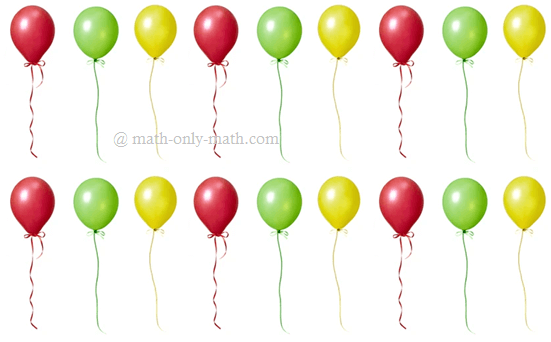
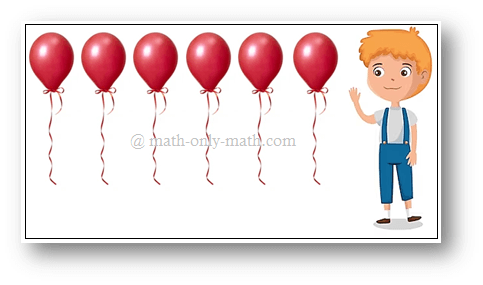
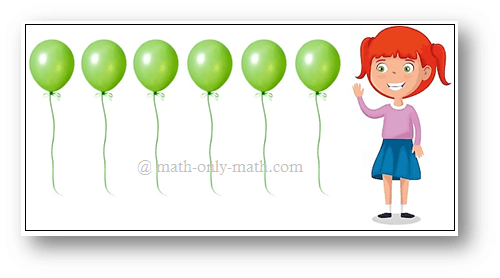
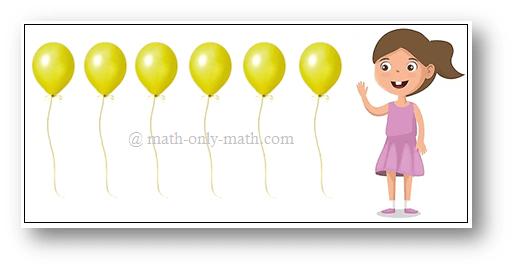

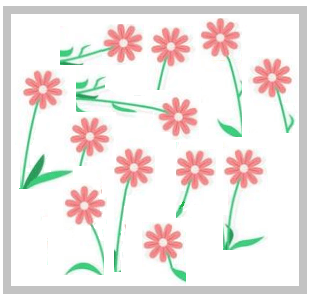

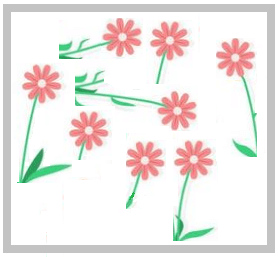


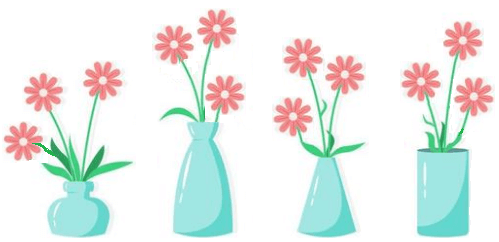


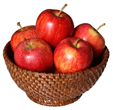
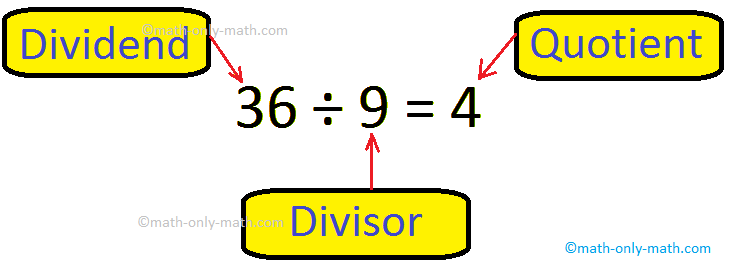

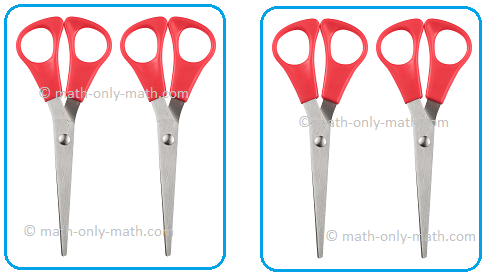

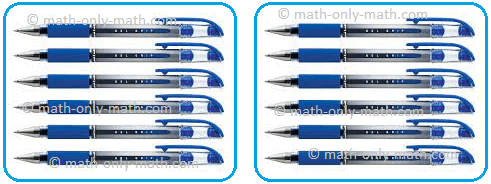
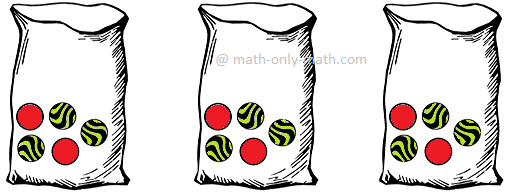

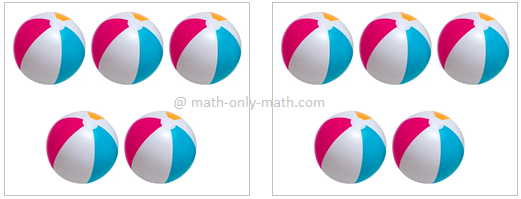

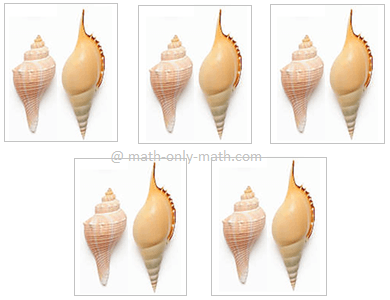

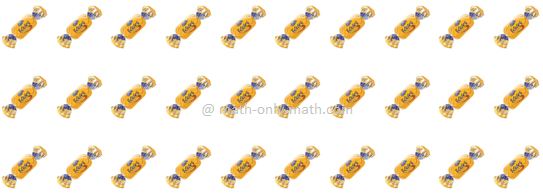




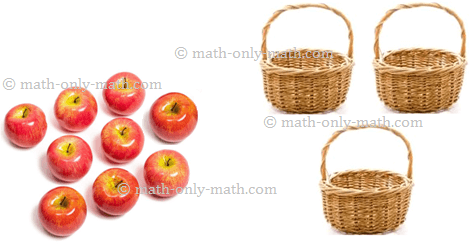
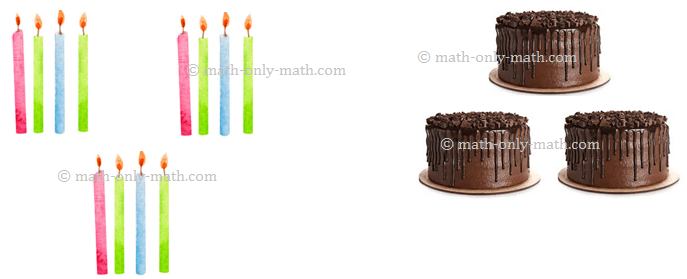


New! Comments
Have your say about what you just read! Leave me a comment in the box below. Ask a Question or Answer a Question.